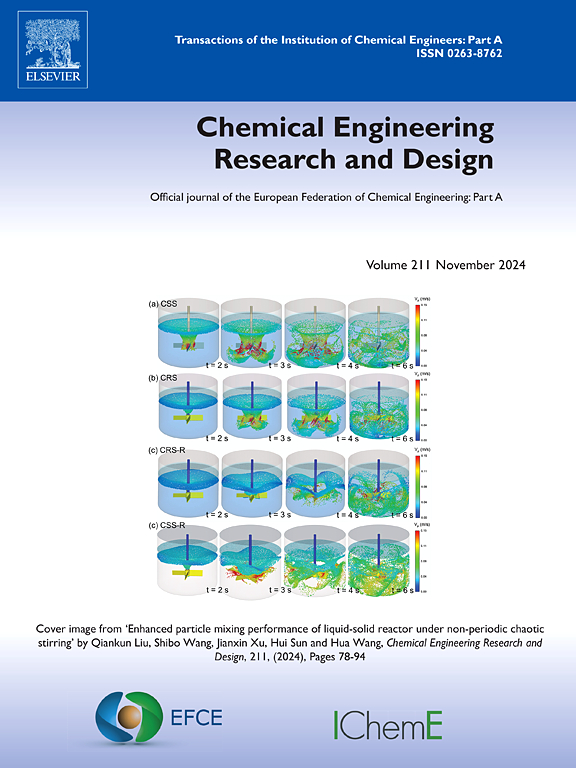Effective separation of nicotine from tobacco extract by silica gel
IF 3.7
3区 工程技术
Q2 ENGINEERING, CHEMICAL
引用次数: 0
Abstract
The high nicotine content in tobacco extract restricts its application in low-nicotine products. This study presents an economical and efficient methodology for the separation of nicotine using silica gel. The performances of static adsorption, dynamic separation, and regeneration were systematically evaluated. The results indicated that silica gel attained a maximum nicotine adsorption capacity of 73.23 mg/g and reached equilibrium within 30 minutes. Thermodynamic analysis indicated that the process was spontaneous and exothermic. When the water content of silica gel was 20.03 %, its adsorption capacity decreased by approximately 50 %. However, solvent elution and regeneration restored the adsorption capacity to over 95.7 % of that in the anhydrous state. EDS, FTIR, and XPS analyses revealed that the adsorption of nicotine by silica gel mainly depends on hydrogen bonding between surface hydroxyl groups and the pyridine nitrogen of nicotine, with a preferential interaction with the pyridine nitrogen, followed by the pyrrole nitrogen. The nicotine content in the eluted product exceeded 97.79 %, and the recovery rate reached 98.95 % when the silica gel column treatment volume was 6 mL/g. After five reuse cycles, the nicotine recovery rate slightly decreased to 92.15 %. This study provides a scalable and low-cost strategy for efficient nicotine separation, which has significant potential for industrial applications.
硅胶从烟草提取物中有效分离尼古丁
烟草提取物中尼古丁含量高,限制了其在低尼古丁产品中的应用。本研究提出了一种经济高效的硅胶分离烟碱的方法。对其静态吸附、动态分离和再生性能进行了系统评价。结果表明,硅胶对烟碱的最大吸附量为73.23 mg/g,在30 min内达到平衡。热力学分析表明,该过程是自发的放热过程。当硅胶的含水量为20.03 %时,其吸附量下降了约50% %。但经溶剂洗脱和再生后,吸附量恢复到无水状态下的95.7% %以上。EDS、FTIR和XPS分析表明,硅胶对烟碱的吸附主要依赖于烟碱表面羟基与吡啶氮之间的氢键,与吡啶氮优先相互作用,其次是吡咯氮。洗脱产物中尼古丁含量超过97.79 %,当硅胶柱处理体积为6 mL/g时,回收率达到98.95 %。5次循环后,烟碱回收率略有下降,为92.15 %。本研究为高效分离尼古丁提供了一种可扩展的低成本策略,具有重要的工业应用潜力。
本文章由计算机程序翻译,如有差异,请以英文原文为准。
求助全文
约1分钟内获得全文
求助全文
来源期刊

Chemical Engineering Research & Design
工程技术-工程:化工
CiteScore
6.10
自引率
7.70%
发文量
623
审稿时长
42 days
期刊介绍:
ChERD aims to be the principal international journal for publication of high quality, original papers in chemical engineering.
Papers showing how research results can be used in chemical engineering design, and accounts of experimental or theoretical research work bringing new perspectives to established principles, highlighting unsolved problems or indicating directions for future research, are particularly welcome. Contributions that deal with new developments in plant or processes and that can be given quantitative expression are encouraged. The journal is especially interested in papers that extend the boundaries of traditional chemical engineering.
 求助内容:
求助内容: 应助结果提醒方式:
应助结果提醒方式:


